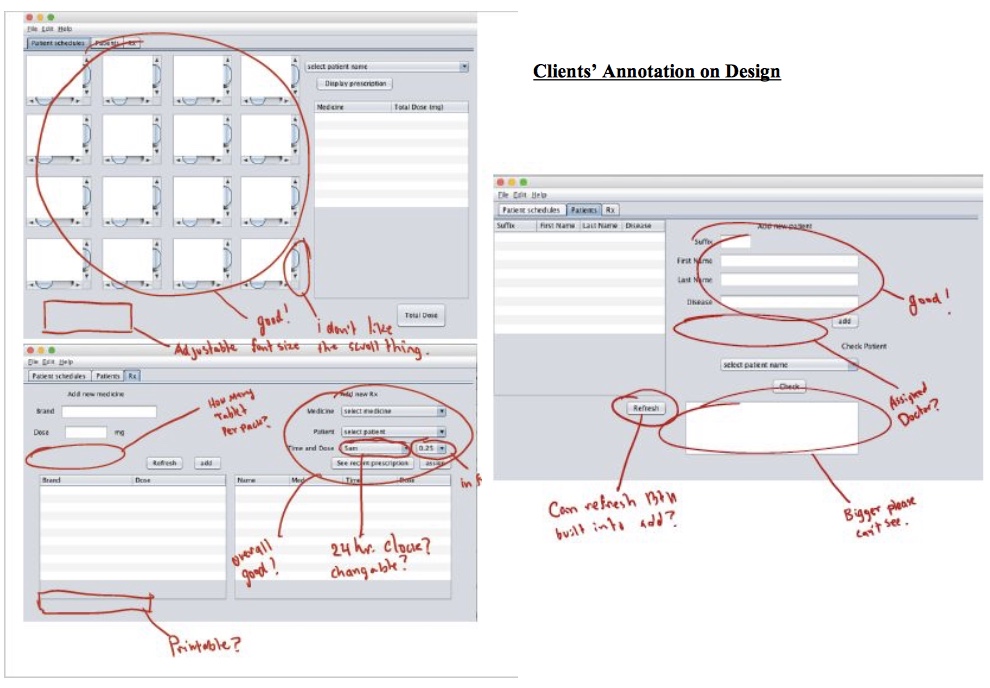The Prototype & Prototype Interview
After the initial interview, you will sketch up an idea of your solution for your client. You will likely just do so in Netbeans, dragging around GUI elements, taking screen shots, and printing them out. Then, when you meet your client again, the two of you will go over these "prototype" images, and mark them up with suggestions/comments in pen or pencil.
1. Make your Netbeans Project (etc.)
Remember that in order to do so, the New Project has to be of the kind Application Sample Form:
- File, New Project
- Java, Java Application, Next, Finish
- Control-click on the package icon, and New, Application Sample Form... etc.
2. Design your GUI
The one GUI trick that you may have forgotten is how to get a tabbed panel with tabs. It's:
- Drag over TabbedPane from the Swing Controls of the Palette Window (Window, Reset Window if you don't have it)
- Make it bigger.
- Drag over Panels, and release when you get the amber marquee rectangle showing.
3. Screen-shots
Take screen-shot pictures of this prototype and SAVE IT - don't lose it; you will need it when you do your "Prototyping Process" section of Criterion B.
4. Print out each tab on a separate piece of paper
Print out and take the sheets - one per tab - to you client, and explain to them how you intend for the program to work. During your discussion, ask them what they think, and for any suggestions for improvement.
5. Think through/plan the second interview
Like for the first interview, making a list of possible questions would be a good approach, but, again, keep in mind that you'll want to "go with the flow" during the interview, and follow-up on useful directions the interview takes.
6. During your "prototype interview", share them with your client, and annotate changes and suggestions
MARK THESE IDEAS/CHANGES WITH PENCIL/PEN RIGHT ON THE SHEETS. And preferably write your comments etc. yourself, and have them write their own; this is the biggest indication you have in the whole process to show that you had an actual client, and that you properly consulted with them to solve their problem. DO NOT do this some completely digital way; you totally lose the effect.
You do not absolutely have to audio record this interview, but it would not at all be a bad idea. The main thing you have to emerge from it wit is the marked-up prototype. But you should also have at least a summary, perhaps point form, narrative of the interview.
7. Take pictures & save them
Then TAKE A PICTURE OF THESE PENCILED UP SHEETS; just use your phone for this. This is a key part to include in your Criterion A, with the the penciled over part most crucial; it's what shows what you and your client discussed and changed.
And if there are not too many changed, still, with pencil, write things like "Ok", "Good", and "I love it!!" etc. But probably, indeed hopefully, there will be some significant suggestions/alterations/improvements that will come up during the interview. Here is an example:

8. Write a summary paragraph
Write a summary points paragraph, which describes the discussion during this prototype interview, and also reiterates the main changes suggested by your client that came up during the discussion.